
|
Tom Benson
NASA Glenn Research Center
|
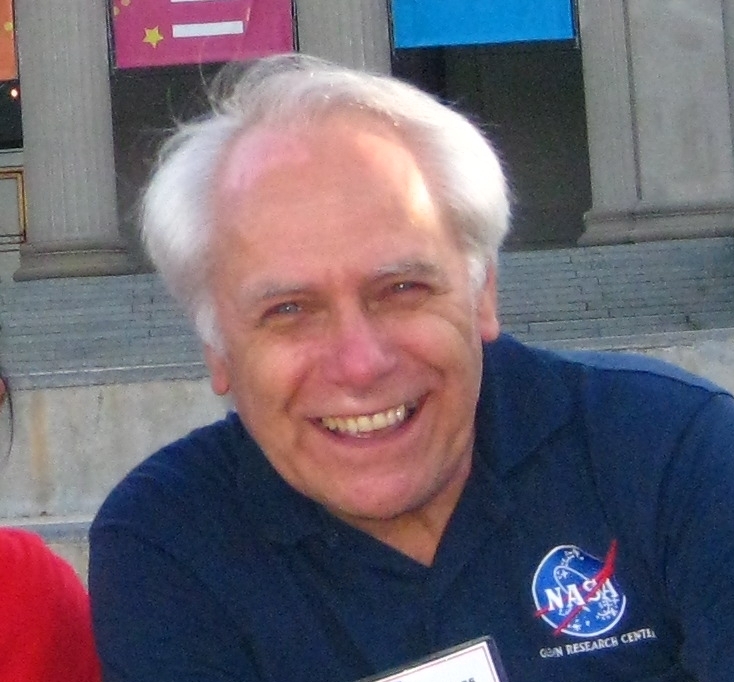
|
It has been about 12 years since I last updated this webpage, so it is time to catch up. A lot has happened in the last dozen years.
I have been an aeronautical engineer now
for more than 40 years and have worked at the NASA Glenn Research Center in Cleveland, Ohio,
for more than 30 of those years. I have had the pleasure of working with many interesting people on
challenging fluid mechanics problems. For the last 15 years I have been developing
interactive software
and a large educational website
to help students learn about math and science. I also particpate in
videoconferencing with both teachers and students as part of NASA's
Digital Learning Network.
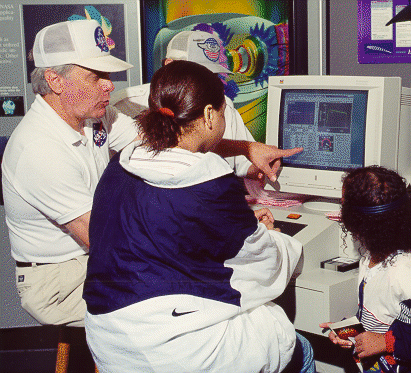
Career Information
I was born and grew up in Columbus, Ohio. My engineering career began with
an interest in airplanes and space flight when I was in grade school in the
1950's. During my childhood, I read science fiction stories and watched sci-fi
movies. My brother and I built and flew paper airplanes, kites, wooden gliders,
rubberband-powered aircraft and model rockets. In high school, I was pretty good at
math, science, and reading (English) and as a 10th grade science fair project,
I built a very simple, manually-switched computer that always beat the user at Tic-Tac-Toe.
Computers were relatively new at that time, and the experience taught me a great
deal about computers. In 1965 I entered Ohio State University to major in
electrical engineering, but quickly switched to aeronautical engineering as
NASA's Gemini and Apollo programs picked up steam.
I enjoyed learning about airplanes and spacecraft, enjoyed
solving problems, and could get paid to work with airplanes. So that was my
career choice. College seemed to go by very quickly, and there was so much to
learn besides aerodynamics. I really enjoyed art, literature, and music courses
along with the boundary layer theory, thermodynamics, and calculus. I graduated
in 1971 with Bachelor's and Master's of Science Degrees in Aeronautical and
Astronautical Engineering. As a master's student, I studied how blood flows
through the circulatory system of the body. My thesis project was a computational
model of the flow in the capillaries (the smallest blood vessels in the body).
My plans were to keep going to college to get a Ph.D., but I was drafted into
the military towards the end of the Vietnam war.
From 1971 to 1975 I served as an enlisted man in the United States Air Force
at Wright-Patterson AFB in Dayton, Ohio. Because I had a college degree, I was
able to work as an engineer in the Inlet Aerodynamics group of the Aeronautical
Systems Division. The inlet is the part of the aircraft
that brings air into the propulsion system. 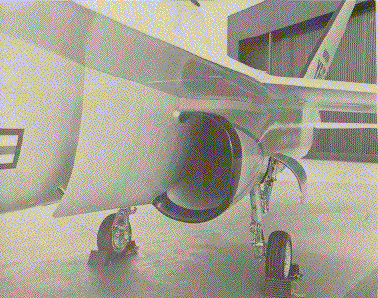 It was a very busy and exciting time. I participated in the wind tunnel testing
and performance assessment for the inlets on the B1-A, F-16, and YF-17 (later
to become the Navy F-18). I was also on the source selection team for the Air
Combat Fighter (F-16) and the EF-111 and was involved in performance predictions
of the F5-E and Airborne Command Post (later to become the 747 version of Air
Force 1). I even participated in flight tests on the IR-suppression system of the
AC-130 gunship. When my military service time ended, I returned to Ohio State to work on the
Ph.D. After more classwork on the computational modeling of fluid flows I passed
my general exams. But I was getting tired of the college life and had a wife and two kids,
so I decided to get a "real job".
It was a very busy and exciting time. I participated in the wind tunnel testing
and performance assessment for the inlets on the B1-A, F-16, and YF-17 (later
to become the Navy F-18). I was also on the source selection team for the Air
Combat Fighter (F-16) and the EF-111 and was involved in performance predictions
of the F5-E and Airborne Command Post (later to become the 747 version of Air
Force 1). I even participated in flight tests on the IR-suppression system of the
AC-130 gunship. When my military service time ended, I returned to Ohio State to work on the
Ph.D. After more classwork on the computational modeling of fluid flows I passed
my general exams. But I was getting tired of the college life and had a wife and two kids,
so I decided to get a "real job".
In 1978, I applied to NASA and landed a job at the NASA Lewis Research Center
(now called NASA Glenn). I planned to finish my dissertation while working at
NASA, but never did. My first assignment involved building and testing large
computer programs that could analyze the three-dimensional, supersonic
flows through high speed aircraft inlets. This area of research is called Computational
Fluid Dynamics (CFD) and allowed me to use both my academic and my military
experiences. We were particularly interested in the flow through a rectangular
inlet for hypersonic flight. We discovered some interesting three dimensional flow problems
associated with this type of inlet.
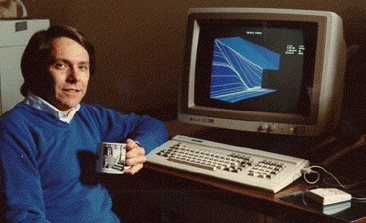
Based on my inlet work, I was assigned to the National Aerospace Plane (NASP)
project to develop a vehicle that would take off like an airplane and fly into
low Earth orbit. There were many technical meetings on that project and I had to travel
around the country to work with fellow CFD and high speed inlet people in government and industry.
I was appointed to an AGARD (NATO) working group on inlets that required several trips to Europe
to work with British, German, French, and Italian researchers. Meanwhile, a
group of us at Lewis began a CFD project to build a well documented, easily modifiable computer
program. Ideas from this program were used in several other projects
at that time.
In the early 1990's, I decided to give management a try, but after a year,
I found that I didn't like management. So I returned to the technical world but in a slightly
different area. I worked for several years using CFD on space experiments. One
of the experiments was flown on the Space Shuttle to test methods for moving
fluids in microgravity.
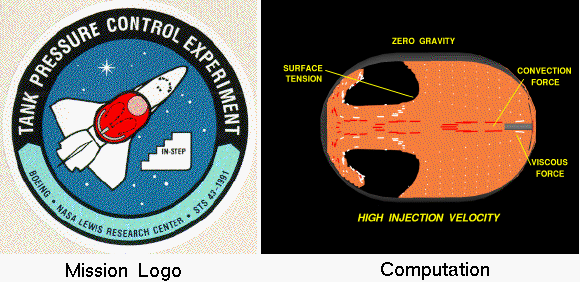 The CFD programs that I used at that time were "batch" programs that ran on a
large mainframe for many hours. But I was becoming more interested in interactive
programs like the video games my son played at home. With an interactive program
the user changes some input using a special device, the program computes a new result,
and then presents the answer immediately using computer graphics.
I wanted to research the use of this kind of technology to study fluid mechanics
problems. As I began to test an interactive design program, it occurred to me
that the program could be better used as an educational tool. So I started
to build small, interactive computer programs for college students to learn the
basics of aerodynamics. The programs were designed to look and act like an experimental
wind tunnel, but they would run on a desktop computer or laptop. Several of the
programs have now been modified for high school and middle school students. To distribute
the programs and the backgound information and equations used in the programs, we
turned to the Internet. I began to write an on-line textbook called the
"Beginner's Guide to Aeronautics".
The CFD programs that I used at that time were "batch" programs that ran on a
large mainframe for many hours. But I was becoming more interested in interactive
programs like the video games my son played at home. With an interactive program
the user changes some input using a special device, the program computes a new result,
and then presents the answer immediately using computer graphics.
I wanted to research the use of this kind of technology to study fluid mechanics
problems. As I began to test an interactive design program, it occurred to me
that the program could be better used as an educational tool. So I started
to build small, interactive computer programs for college students to learn the
basics of aerodynamics. The programs were designed to look and act like an experimental
wind tunnel, but they would run on a desktop computer or laptop. Several of the
programs have now been modified for high school and middle school students. To distribute
the programs and the backgound information and equations used in the programs, we
turned to the Internet. I began to write an on-line textbook called the
"Beginner's Guide to Aeronautics".
For the last 15 years I have split my time at NASA between inlet and nozzle aerodynamics
and work with Glenn's Educational Programs Office. During the early 2000's we built a
special section
of the Beginner's Guide to tell the scientific story of the Wright Brothers and
the invention of the airplane. As part of that telling, Roger Storm and I don
bowlers and hard collars and
present the story
as Wilbur and Orville. We have travelled the
country over the last dozen years and are particularly proud of being invited to Dayton
to speak at Wright Brothers Day with the Wright family.

One of the interactive computer programs is a simulation of the flight of a baseball.
The forces on a
baseball in flight
are exactly the same as the forces on an aircraft, except for the thrust. Because of
interest in the baseball simulation, I have appeared on the Major League Baseball Network
broadcast, have had discussions with former major league players, have given talks
at Progressive Field for the Cleveland Indians, and got to throw out the first pitch at
a major league game.
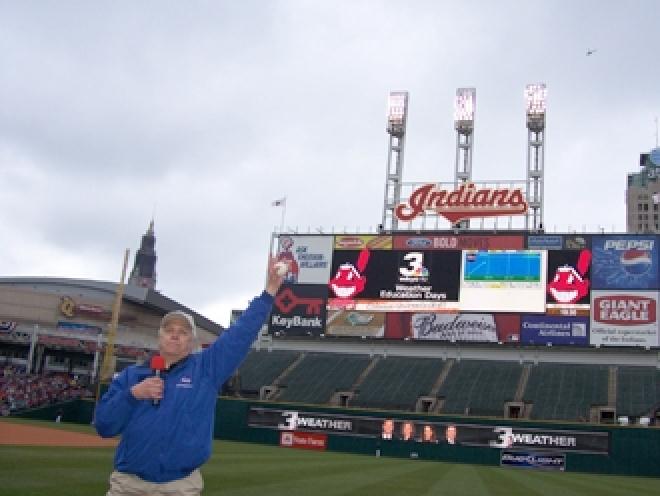
Educational outreach has lead to frequent participation in videoconferencing
with students of all ages. In 2012, I was invited to give a TED talk on creativity at
TEDxCLE.
As part of educational outreach, I have been asked to appear at many activities over the last dozen
years. I spent two weeks in Washington DC as part of the Smithsonian Folklife Festival in 2008
demonstrating a small wind tunnel on the National Mall.
I also worked at the NASA exhibit during the first two USA Science and Engineering Festivals in DC.
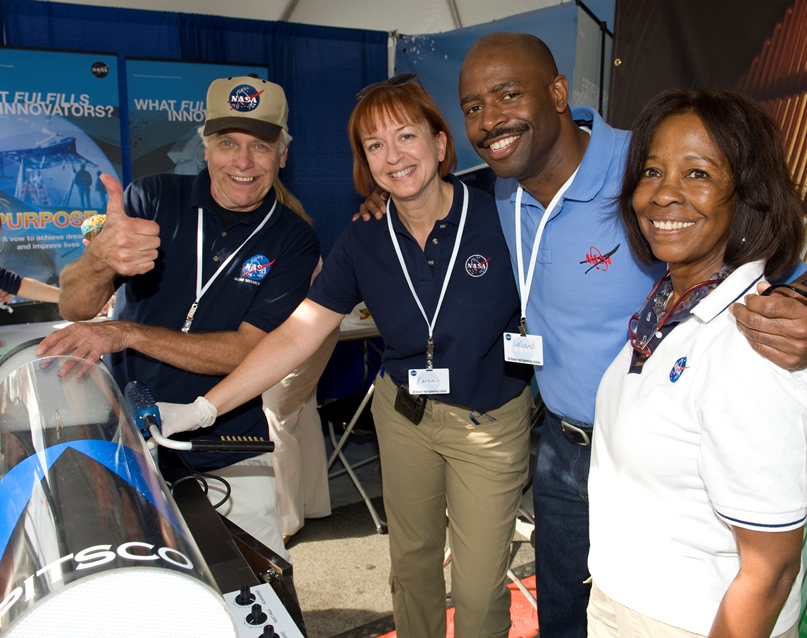
In 2003 NASA invited educators to apply to become astronauts. The last 200 people in the selection
process were designated as the Network of Educator Astronaut Teachers (NEAT). Beginning in the summer of 2005, and for the following 5 years, I was asked to work with the NEAT teachers in the
NASA Glenn region. Each summer we would have a week long workshop at which
we would brief them on NASA missions for the coming year so that
they could carry this information back to their schools and students. They are a group of outstanding
math and science teachers, and it has been my honor to work with them and to get to know
them as friends. In 2011, we were all invited to
view the last launch of the Space Shuttle (STS-135) from the NASA Causeway
at the Kennedy Space Center.
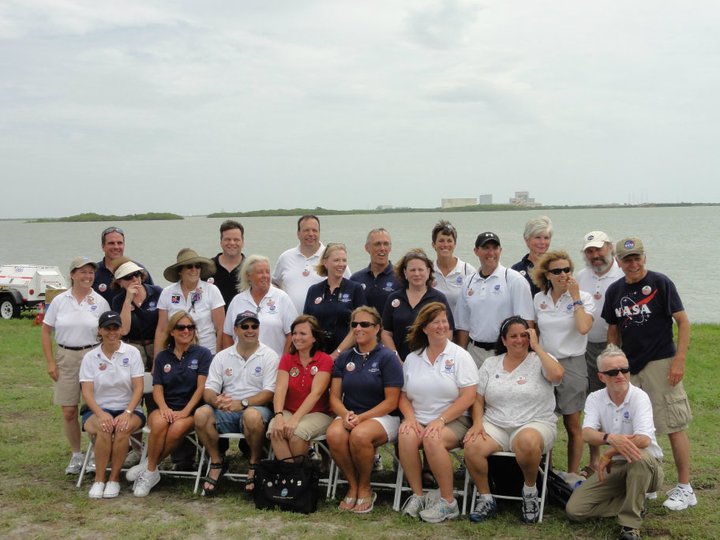
Other Interests
I have three grown children and three grand-children. Unfortunately, none of them live
in the Cleveland area.
Like many engineers and scientists, I have a love for music. I sing in the church choir every
Sunday. I also belong to group that sings Gregorian Chant. I play guitar at church and have played
bass guitar in a garage band and a roots music band here at NASA. Being from Columbus, I'm an avid OSU and Cleveland Browns football fan. I belong to a health club and try to stay physically fit. For many
years, I used to ride a bicycle to work. That stopped when I broke my collar bone in a slip on ice
riding in the dead of winter. I like math puzzles and video games and have beaten most of the Zelda
games (still working on Skyward Sword).



Go to...
- Beginner's Guide Home Page
- NASA Home Page
- http://www.nasa.gov
|
